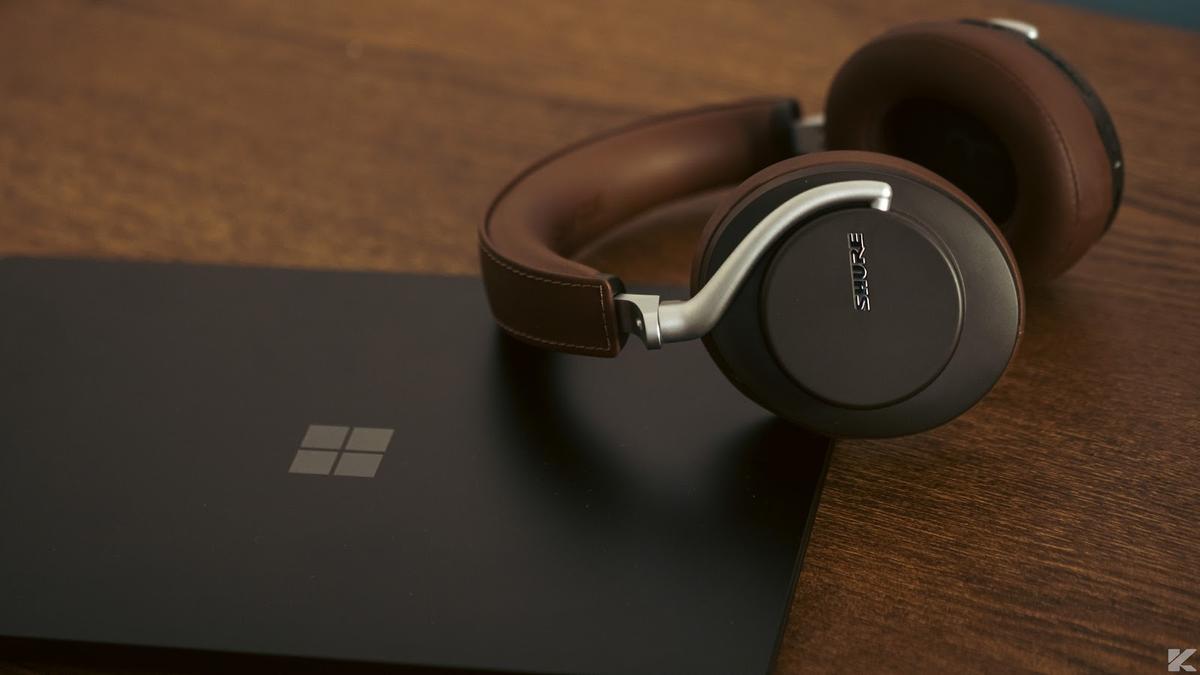Shure’s previous flagship Bluetooth headphones are far more appealing, thanks to a generous price reduction.
Unboxing and First Impression
Where to Buy
Introduction
I primarily associate Shure with studio and stage equipment. The microphones are legendary, while the Shure SRH-1540 headphones have been a mainstay in many recording studios for over a decade.
However, the same cannot be said for their wireless headphones, and the Aonic lineup has mostly flown under the radar. The previous flagship Aonic 50 bear the unenviable task of standing out amidst stiff competition.
It is make-or-break time for Shure, and it’s time to see if the original Aonic 50 deliver upon the promises or fall by the wayside.
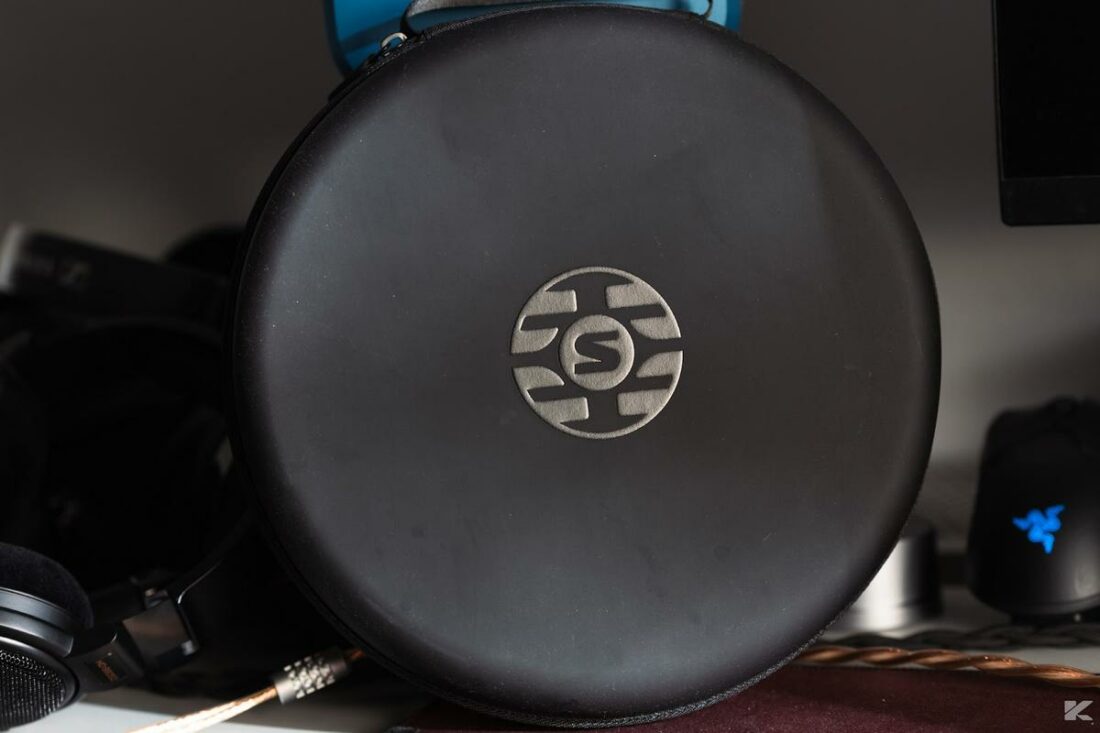
Battery ⓘ
- Battery Life: 20hrs (with ANC on)
- Charge Time (15 mins): up to 240 mins playback time
At only around 20 hours (with ANC on), the battery life of the Shure Aonic 50 is below average, given the competition is pushing 80 hours of playback. I need to charge the headphones once every week, with moderate usage.
15 mins of charge can get up to 4 hours of playback, provided you use a suitable fast-charging cable and charger.
The quick charge function is handy but not class-leading. The headphones will turn off after 15 minutes of being in an “unpaired” state.
UX ⓘ
- Control Mechanism: Mechanical
- Touch Accuracy: N/A
- Control Symmetry on both ear-cups: No
- No wear detection.
There is a dedicated power/Bluetooth pairing button on the right earcup. Next to it is a cluster of three buttons, where the center button acts as play/pause button, and the other two are volume up and down.
The most exciting bit is the ANC control slider.
A manual slider switches between ANC off, ANC on, and Transparency Mode, so you immediately know which mode is active.
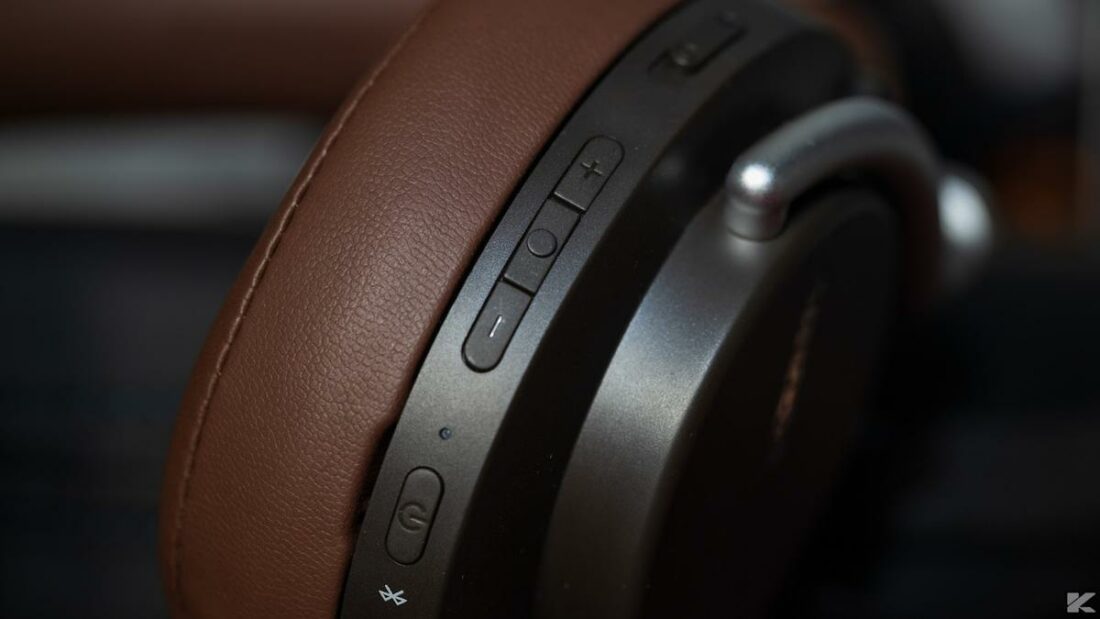
The left earcup hosts only the analog input jack. There are no additional controls here.
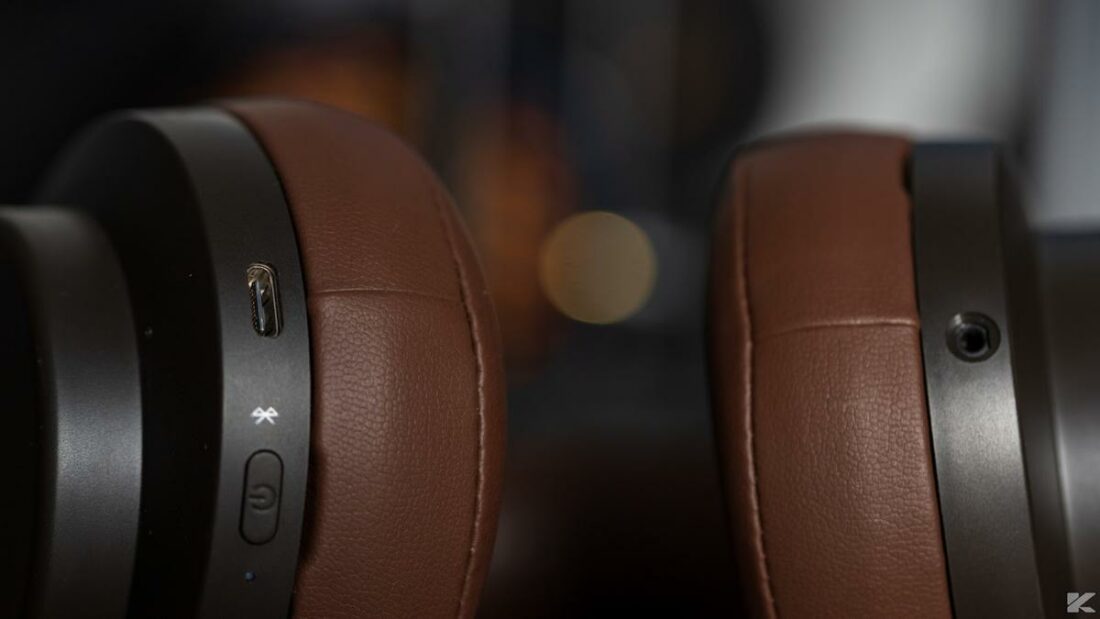
The Shure Aonic 50 lack any touch controls.
With no touch controls, the control scheme is simplified at the cost of flexibility – what you see is what you get.
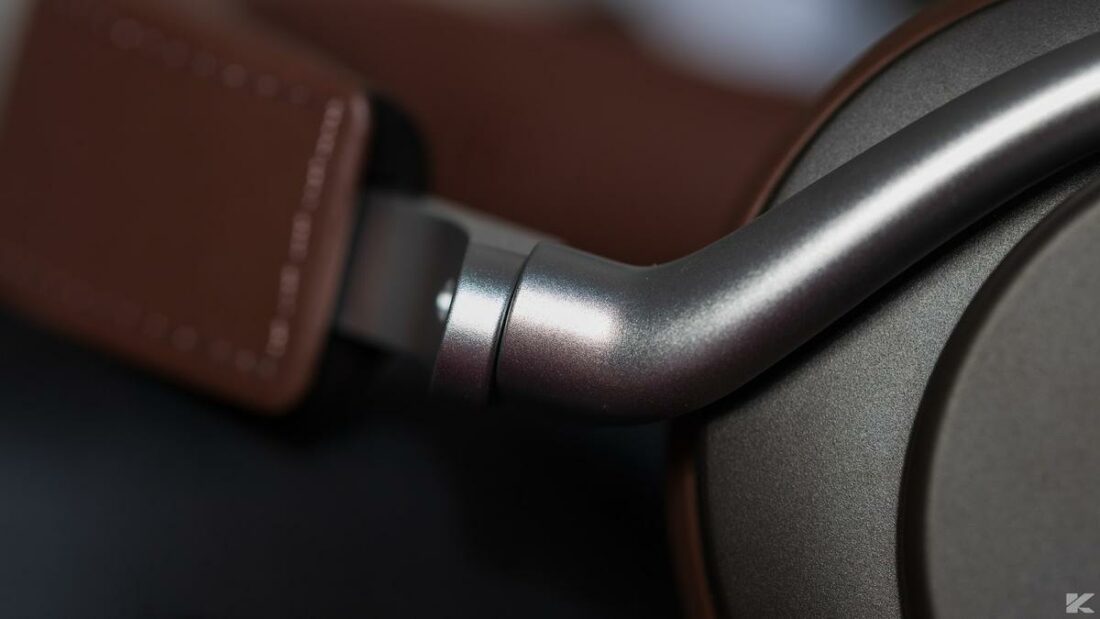
Design ⓘ
- Profile: Over-ear
- Material: Plastic, aluminum, leather
- Fit and Comfort: Outstanding
Shure Aonic 50 have a premium build that befits their high price tag.
The hinges and the headband are all metal, with a stitched leather headband and soft memory foam padding to aid in comfort. The feel in hand is excellent and alludes to their TOTL status.
The adjustment mechanism is excellent, with distinct steps laser-etched onto the headband. The hinge also rotates smoothly without exhibiting any creaks or wobbliness.
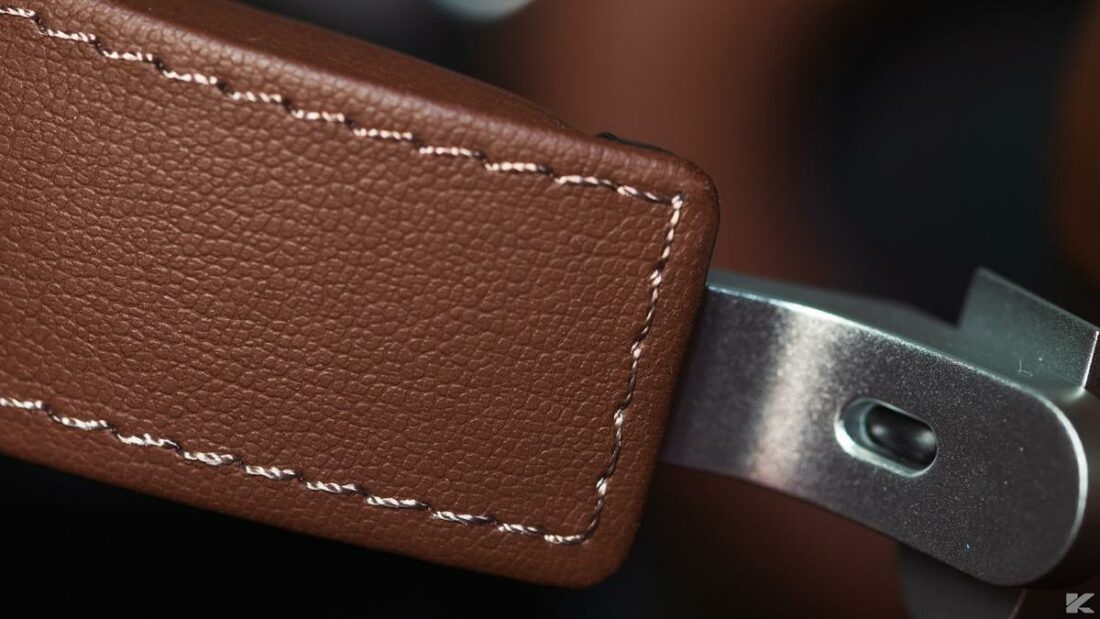
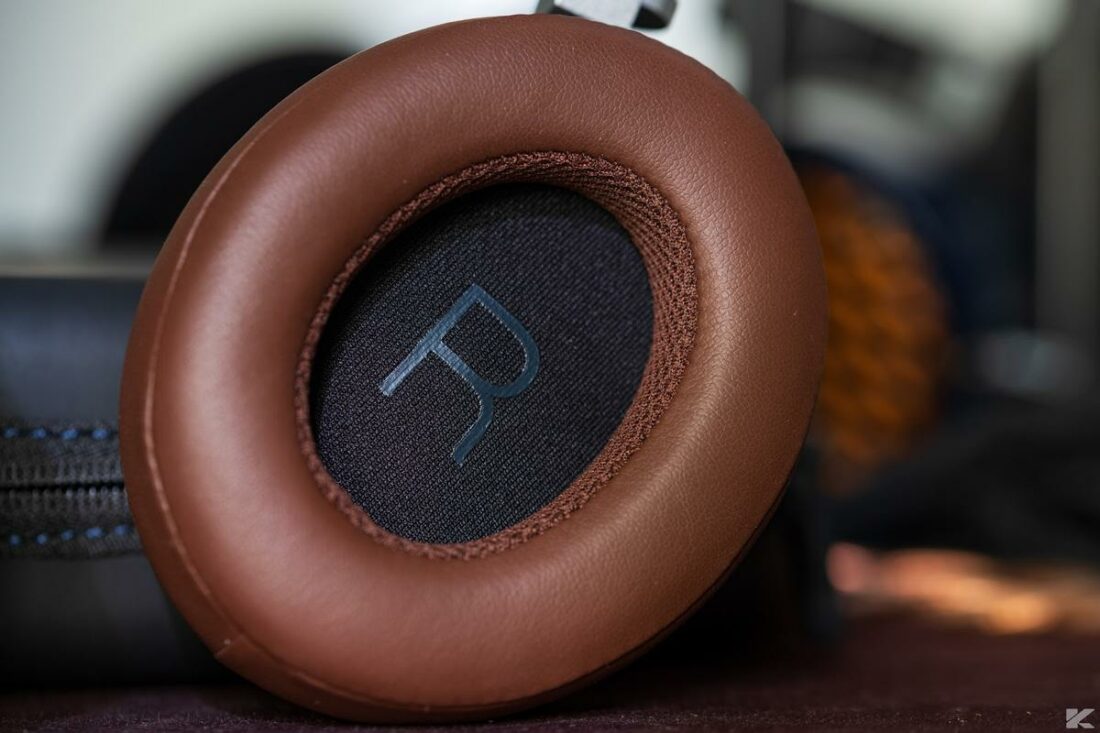
The pads can be detached easily via “unscrewing” them from the earcups. I think it’s a nifty feature and a better implementation than Airpods Max’s magnetically mounted pads. The Beoplay HX also employs a similar method, so the Aonic 50 is in good company.
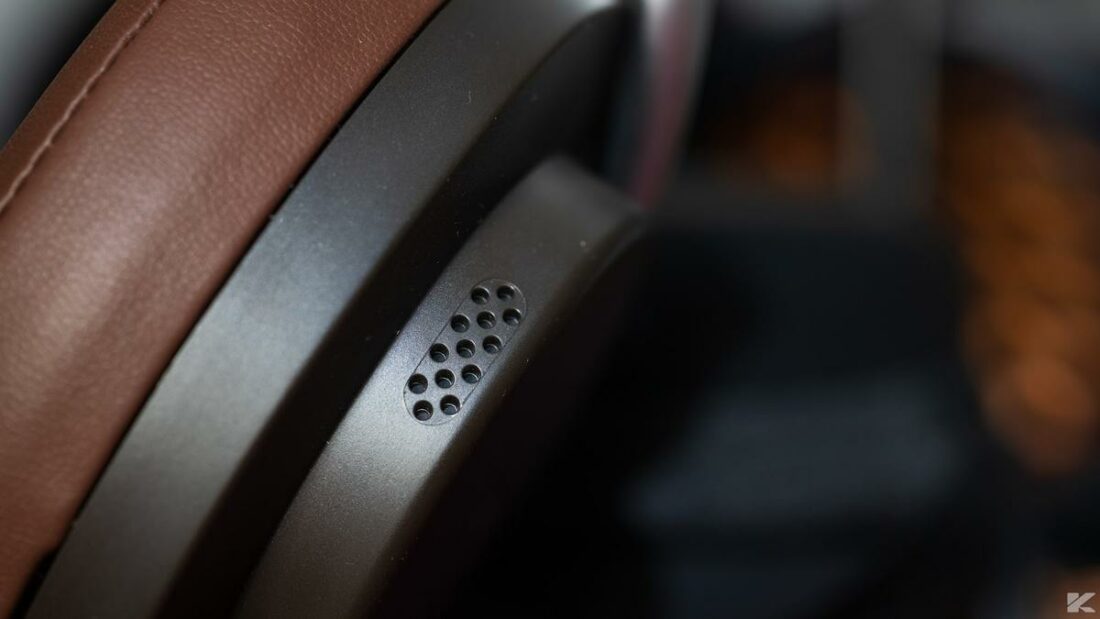
The earpads are made out of leather and have memory foam underneath. Comfort is excellent, and the perforation underneath helps cool off the ears on summer days.
The clamp is perfect for me: strong enough to form a good seal while not being overbearing on the jaws or the temple.
Overall, the Aonic 50 have excellent build quality and top-notch comfort.
Mic ⓘ
- Noise Cancellation: Soft noise
- Voice Pick-up: Clear and no breakup
Shure utilizes six microphones and feed-forward noise cancellation on the Aonic 50 to aid voice pickup. The microphone performance is excellent in relatively quiet conditions, but a little environmental noise seeps in when used in noisy areas.
My voice does not break up or lose clarity, even in the subway or windy conditions.
Background noise is suppressed well, though certain high-frequency noises can pop up from time to time. Mostly, it’s a non-issue, but it is a step below the best in class.
Mic demo
Sound ⓘ
- Driver: 50mm.
- Sound Signature: Mild V-shape
- Bass: Good
- Mids: Average
- Treble: Average
- Soundstage: Good
- Imaging: Average
- Dynamics: Good
The Shure Aonic 50 have average technicalities and a mild V-shaped tuning with some emphasis in the treble region.
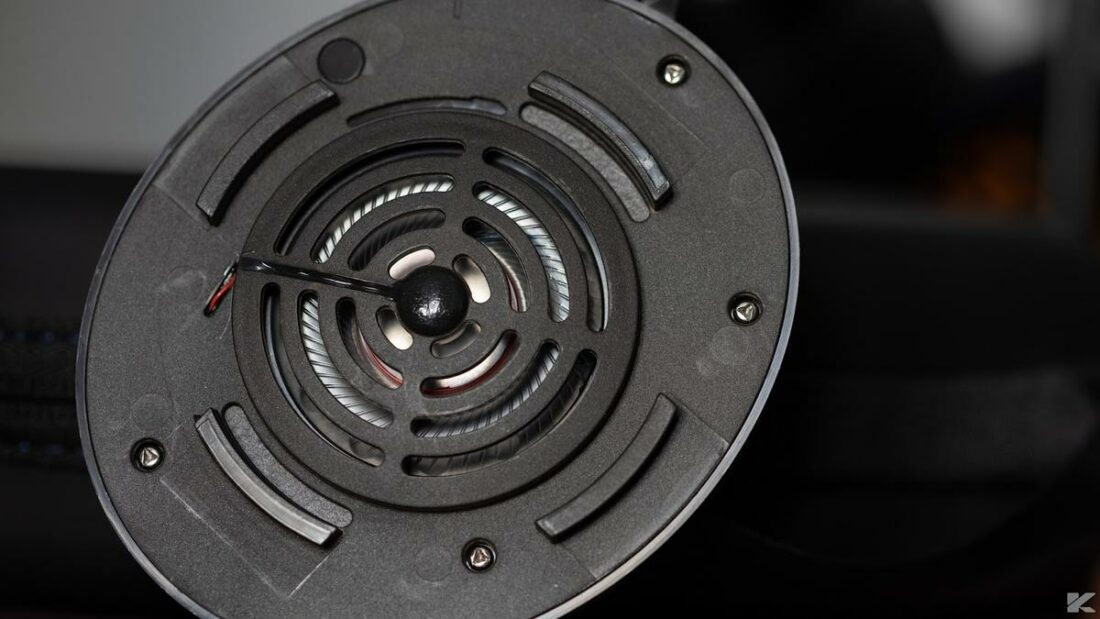
Bass
The bass emphasizes the sub-bass region, but nothing that goes overboard. Mid-bass is on the leaner side, resulting in snare hits and grand pianos lacking some of the bottom-end “fullness.”
Bass texture and speed are fairly good, with fast basslines not being completely blurred. The likes of Stax Spirit S3 do better in this regard, but they are a different beast altogether. Bass slam is not the most prominent either.
Overall, Shure opted for more controlled bass rather than the sheer quantity.
Mids
The lower midrange sounds somewhat lean, especially with the LDAC codec. This leanness is further exacerbated by the relatively prominent upper-mids rise that creates a noticeable contrast.
As a result, female vocals are pushed to the forefront, with guitar riffs and strings also prominent. Baritone vocals, meanwhile, lack the density I expect, as can be heard on Colin Hay’s I Just Don’t Think I’ll Ever Get Over You.
Given male vocals dominate my music library, the overall midrange tuning of the Aonic 50 leaves me wanting.
Treble
There are noticeable peaks around 5.5kHz for me using the LDAC codec, but this tends to smooth out when using AptX or AAC/SBC, which is an interesting phenomenon. Treble has decent extension, as cymbal hits and hi-hats do not abruptly disappear; rather, they have a noticeable decay.
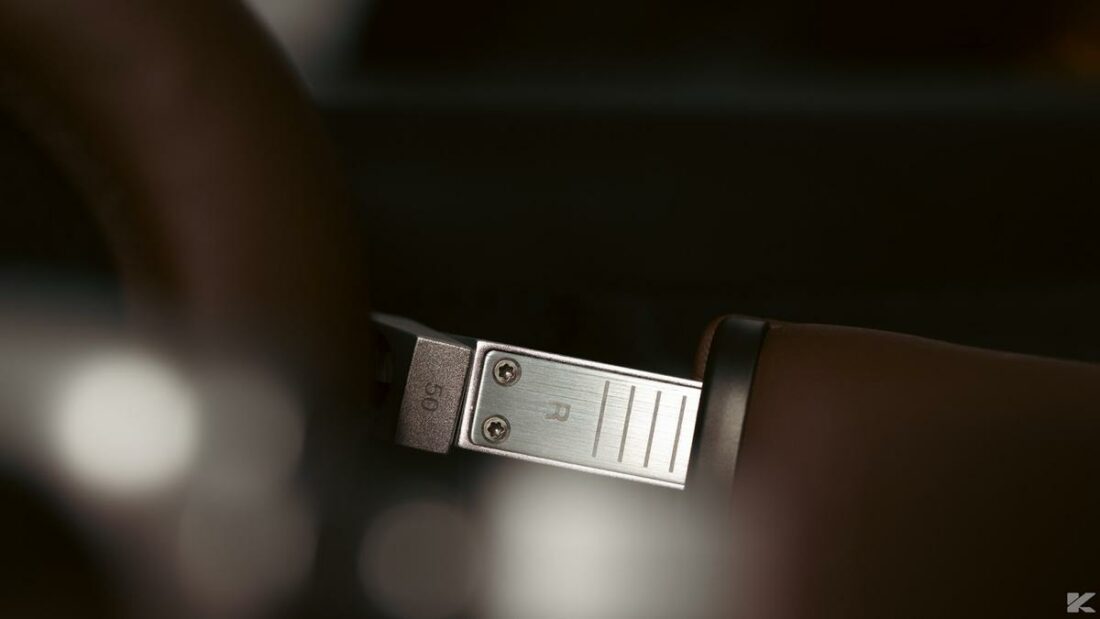
Treble timbre is not the best, as slight metallic sheen can be heard throughout.
Moreover, highs can get “tizzy” when using the LDAC codec. The other (relatively) lossy codecs avoid this pitfall at the cost of added grain in the highs. It’s a matter of trade-off regarding the Aonic 50’s treble.
Dynamics
Macrodynamic punch (sudden volume change) is surprisingly good, with sudden bass drops having a dramatic effect.
Microdynamics (subtle shifts in volume) are less noticeable. For example, in Counting Crow’s Miami, the vocals and the instrument have a continuously varying volume level, which the Aonic 50 fail to replicate faithfully.
Soundstage
The soundstage feels fairly wide and tall despite the prominence of the upper-mids. The Shure Aonic 50 do not sound closed-in or narrow, which is the case for most Bluetooth headphones.
Imaging
Imaging is nothing to write home about, with the instruments mostly placed left and right. Instruments lose the sense of ordinal orientation, resulting in merely average spatial cues.
Active noise cancellation
With the ANC turned on, the sound signature of the Shrue Aonic 50 does not change noticeably.
I recommend keeping ANC on in most cases, as that’s the feature you are paying for.
ANC performance is good, falling slightly behind the class leader Sony WH-1000XM5 in terms of high-frequency noise attenuation.
The app offers granular control of the transparency mode, where you can dial in the exact amount of sound “leakage” you want.
Connectivity ⓘ
- Audio Codec: LDAC, SBC, AAC, AptX Adaptive
- Bluetooth Version: 5.0
- Auto-connect when: Near paired devices
- Average drop-outs in an hour: 0 – 2 times
- Multi-point connection: Yes
The connection is rock-solid, and pairing is pretty simple once the headphones are in pairing mode (pressing the power button for a few seconds).
Multipoint support works seamlessly for two devices. Overall, the Shure Aonic 50 have seamless connectivity, with the lack of fast pairing as the only omission.
Waterproof ⓘ
- IP Rating: N/A
The Shure Aonic 50 do not have an official IP rating, so it’s best to avoid dirt, water sprays, or rain when wearing them outside.
Software ⓘ
- Granular ANC control, including Adaptive ANC
- Parametric EQ support (4-band)
- No remapping of controls or buttons.
- Auto Pause: No.
- Mobile apps
The ShurePlus Play app looks clean and offers some meaningful customization options. There are granular controls for ANC and Transparency mode, while the several PEQ presets are welcome.
There is a lack of control customization, so you are stuck with the factory presets. Moreover, certain features are locked out if you use LDAC codec, e.g., PEQ – a frustrating and unwelcome compromise.
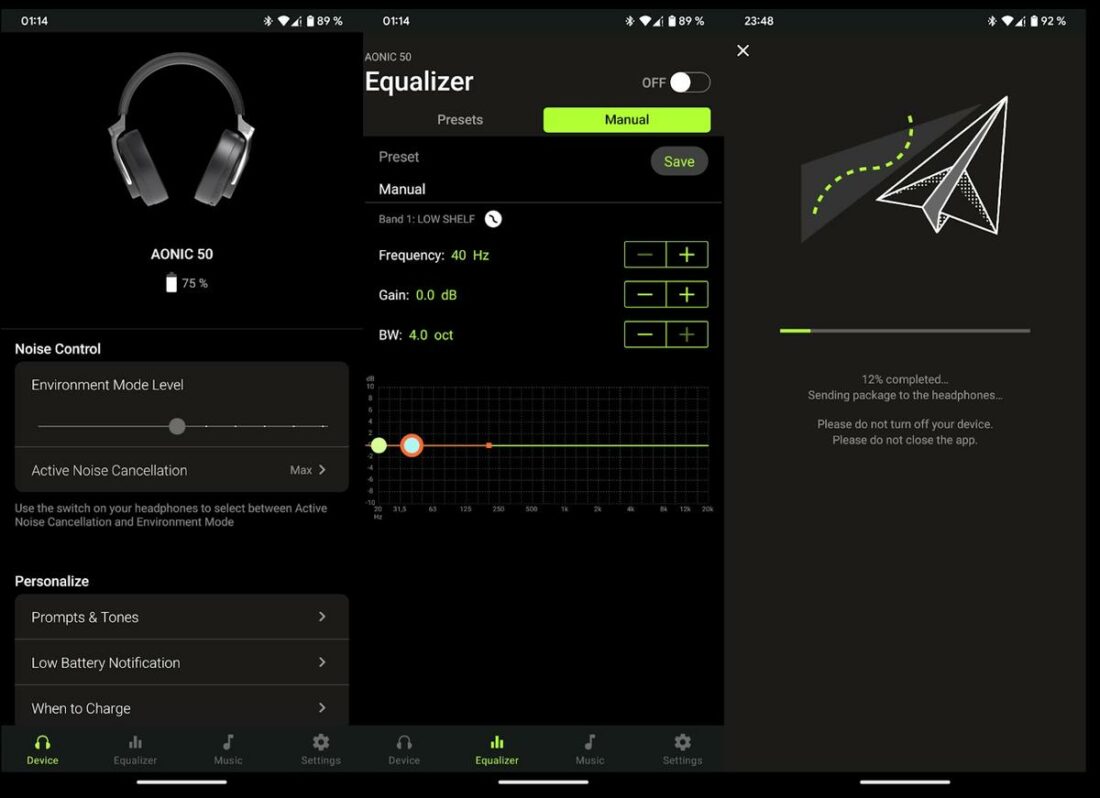
Who Should Buy This?
Those looking for a sleek, comfortable pair of Bluetooth headphones that focus more on clarity than bombastic bass, at the cost of some lower-midrange thinness.
Final Thoughts
Shure Aonic 50 have a distinct design. The build is fantastic, the comfort is superb, and the sound signature is neutral enough to stand out in a crowded market.
The battery life is far from class-leading, and competitors offer better ANC, Transparency mode, and superior microphones.
The saving grace for the original Aonic 50 is the recent price cut after the arrival of the newer Aonic 50 Gen 2 model.
The nearly 50% price reduction makes the Aonic 50 perhaps the best value in the market, given that none of the “established” competitors in the under USD$200 range offer such a comprehensive feature set and sound quality.
So, now is the best time to get a pair of ‘gen 1’ Aonic 50, at least as long as stock lasts, and if you don’t mind their slightly thin mids and middling battery life.
What’s in the Box?
- Shure Aonic 50 headphones
- USB-A to type-C charging cable
- Manuals
- Carry case
- 3.5mm analog input cable
Technical Specifications
- FORM: Closed, Over-Ear
- DRIVER: Dynamic
- BATTERY LIFE: 20 hours
- BLUETOOTH VERSION: 5.0
- WEIGHT: 334 grams
